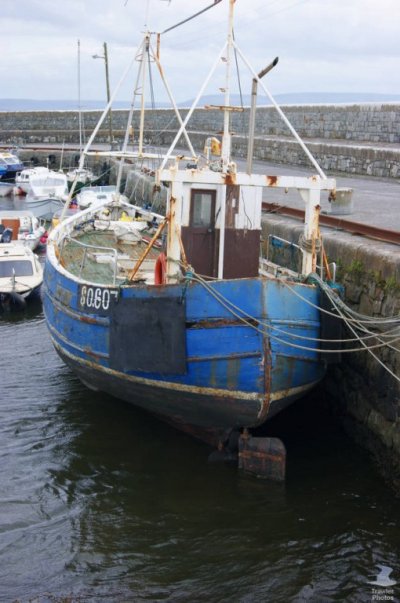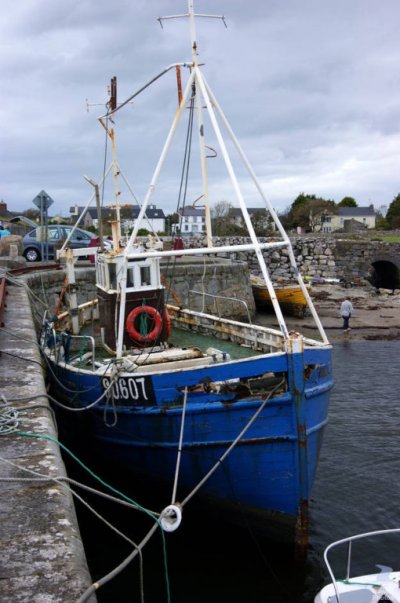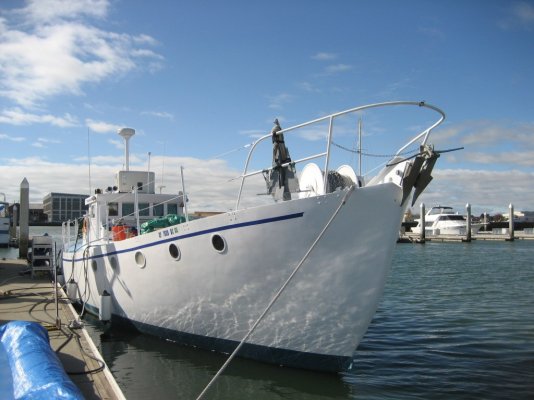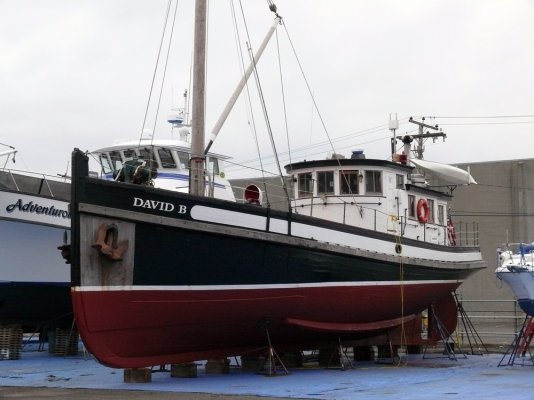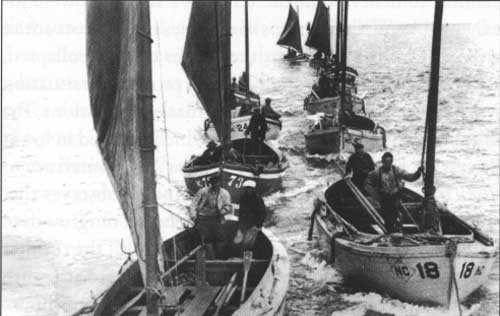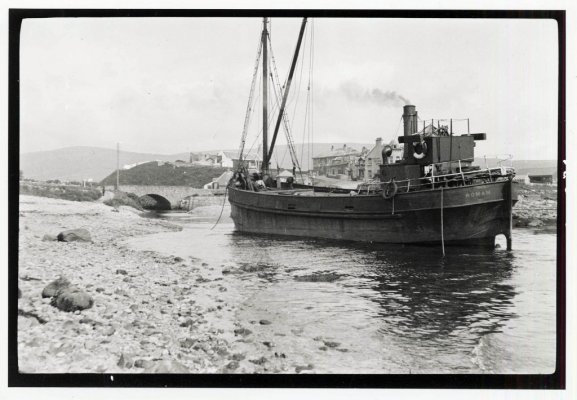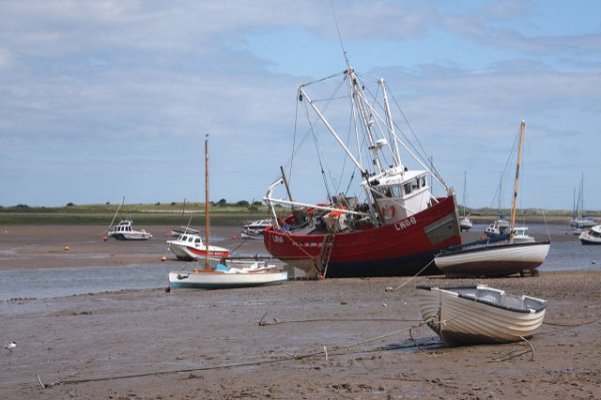Spirit Of The West wrote:
So mates, today i start the first day of restoration on the on the spirit of the west. I was thinking of changing the name...but the locals who knows the boat think it is widly held to be badluck to do so. What you guys think?
I don't believe in that "changing the name is bad luck" stuff.* A boat doesn't care what you call it.* It's* just a collection of wood, metal, and fiberglass.* The whole name thing and ceremony is for the owner, not the boat.
We changed the name of our boat (which had had at least four or five names before we bought it) and our naming ceremony consisted of sanding the old name off the transom and installing the new nameboards we made on the transom and flying bridge sides.
That said, the name we chose has a fair amount of significance to us and it does add "character" to the boat in our minds.
In the US, commercial fishing boats, particularly "back in the day" were often named after people, more often than not a woman.* "Elsie," "Gertrude L. Thebaud," and "Elizabeth Howard," to name some of the more famous ones I'm familiar with.
There can be enough significance to the owners and crews of a boat's name to retain it even if the boat changes hands.* Particularly older boats that have been maintained and preserved down though the years.* Bill Boeing's "Taconite" is a good example.* This yacht has had several owners since Boeing sold it, but the vessel's history is significant enough that everyone who has owned it has retained the name.
If "Spirit of the West" has been the boat's name from the outset, and if it had a fishing career that is of some note (or nostalgia) to the community where you keep the boat--- and to you, too--- then retaining the name makes sense.
If, however, it's just an old boat to you--- a neat design and a vessel you think worth restoring but not because of any specific historical significance--- and you have a name that you prefer to "Spirit of the West," then change it.* Again, the boat's not going to care.
If it was me and the boat had the history it does and is representative of a class of vessels that once represented the fishing industry in my area, I would probably tend to retain the name.* There is a lovely 36' 1940s salmon troller in our marina that the current owner fished in SE Alaska for years and continues to maintain in near-perfect condition even to its original gasoline engine. The boat's name is "Donna."* Were we ever to acquire this boat we would not change the name even though "Donna" is not a particularly appealing or meaningful name to us.* But "Donna" is part of this boat's history and to change the name, I think, would diminish the significance of the boat in our minds a bit, I think.
-- Edited by Marin on Tuesday 20th of March 2012 11:56:31 AM
